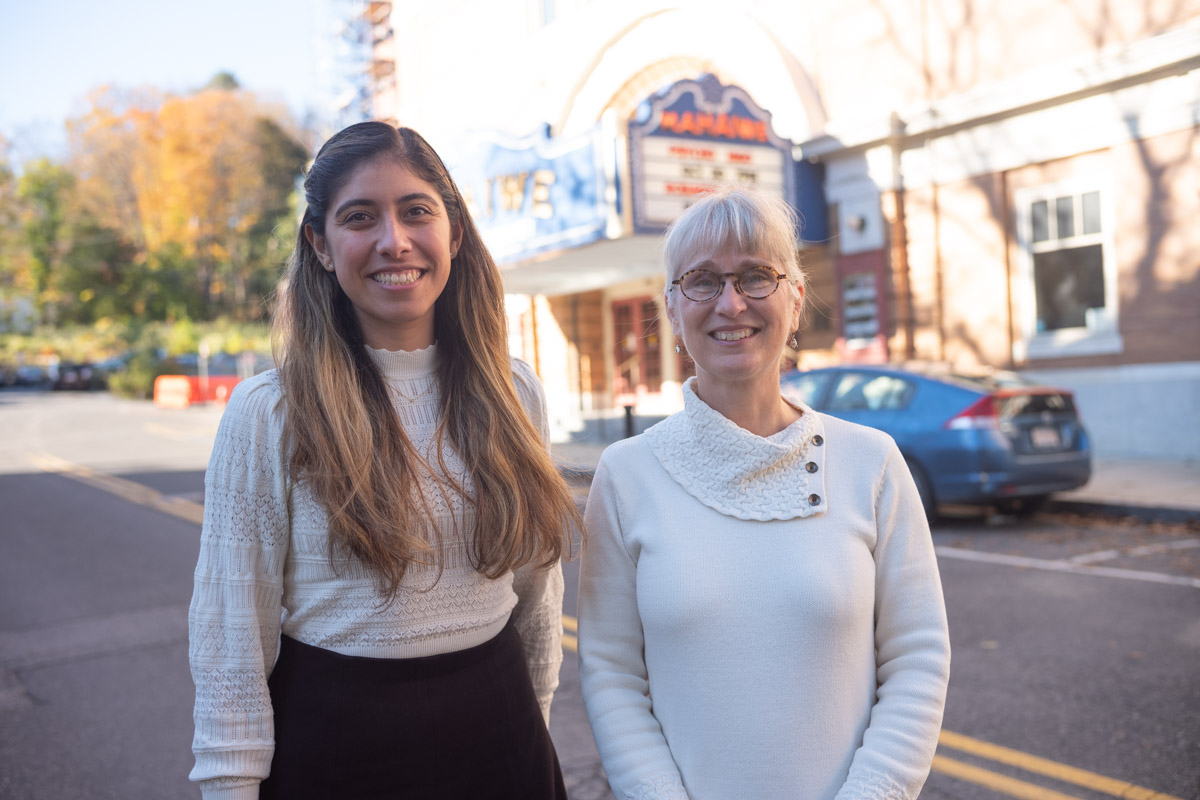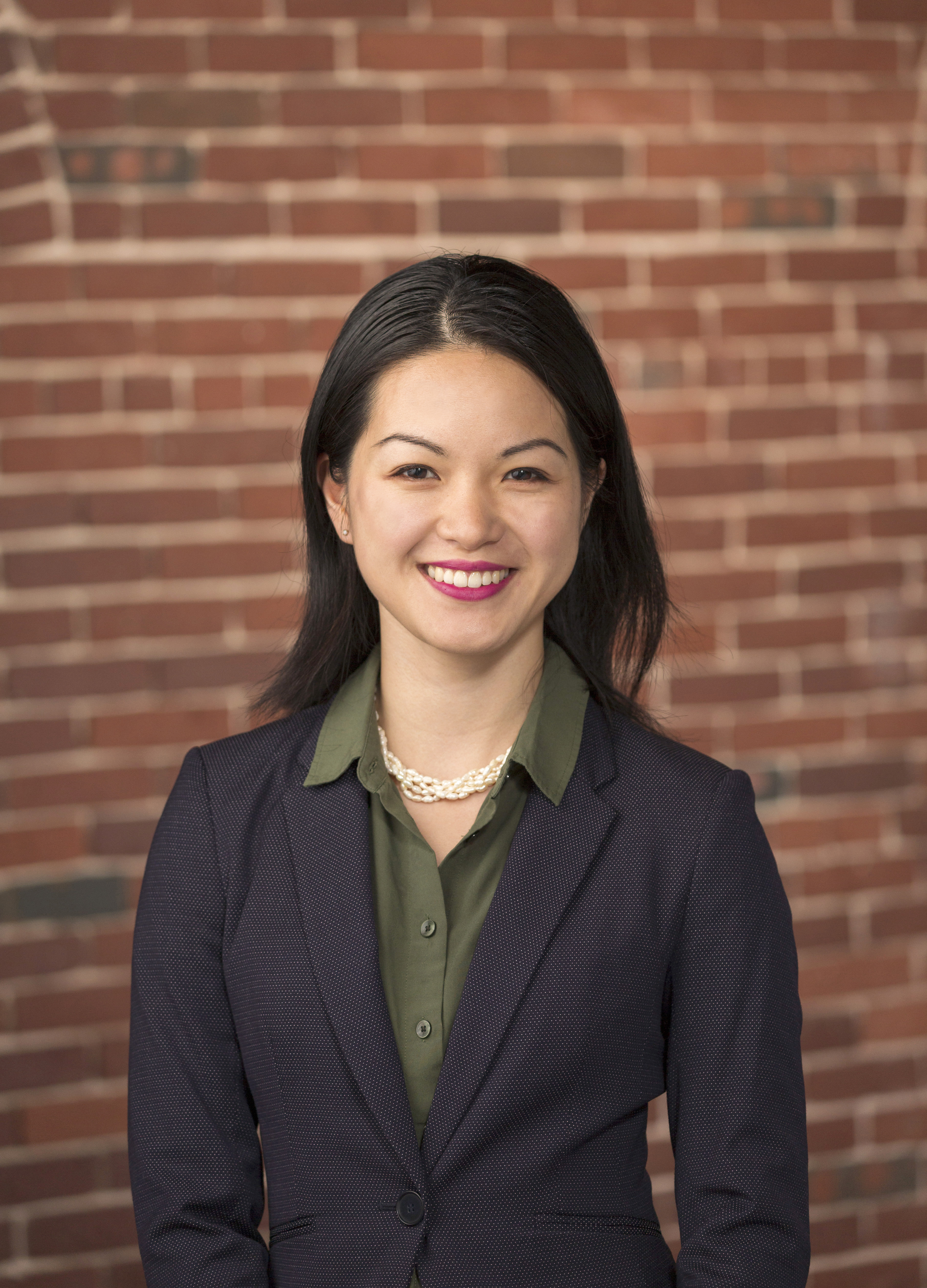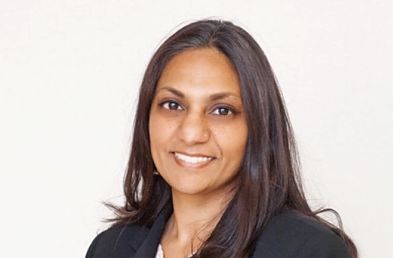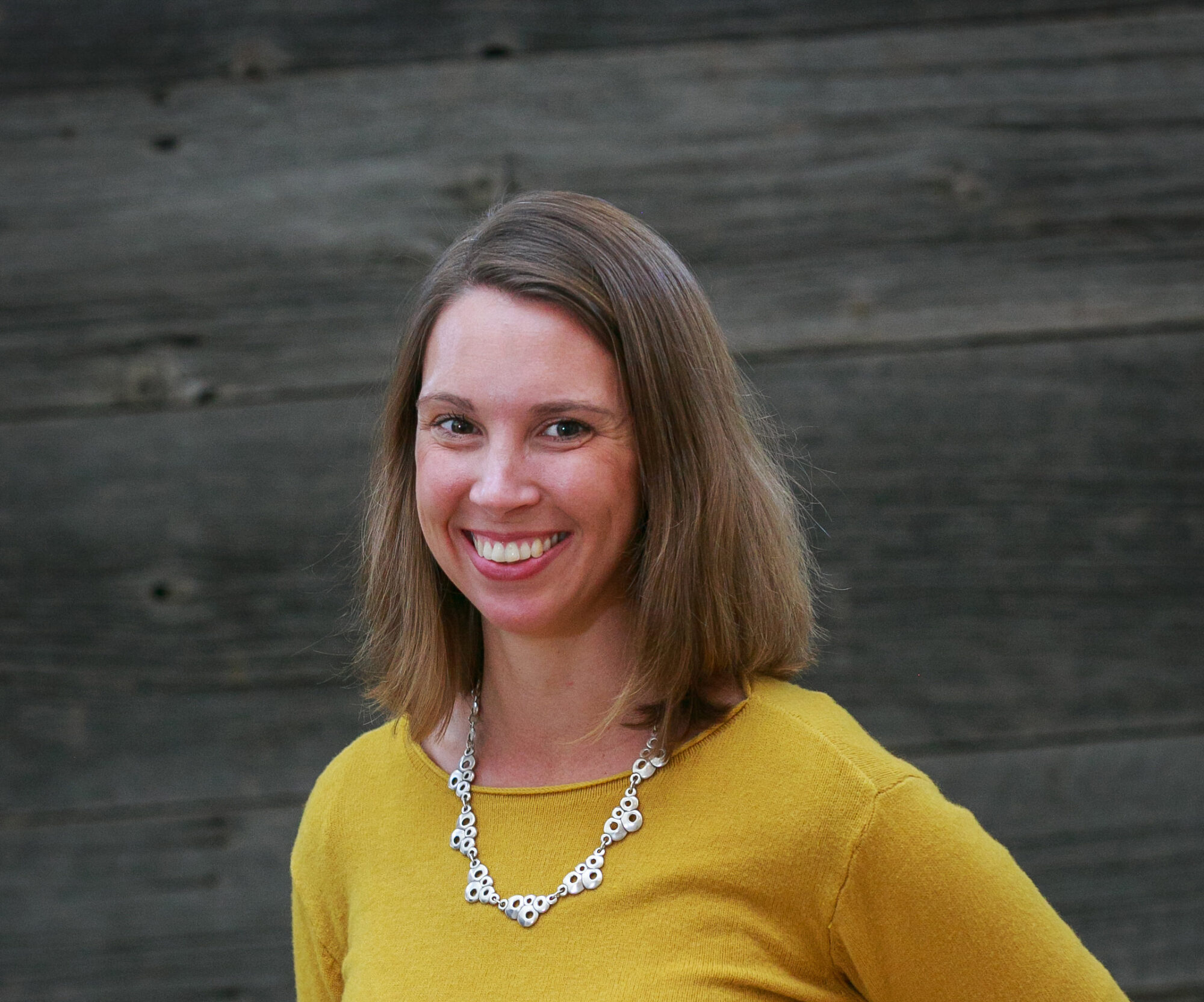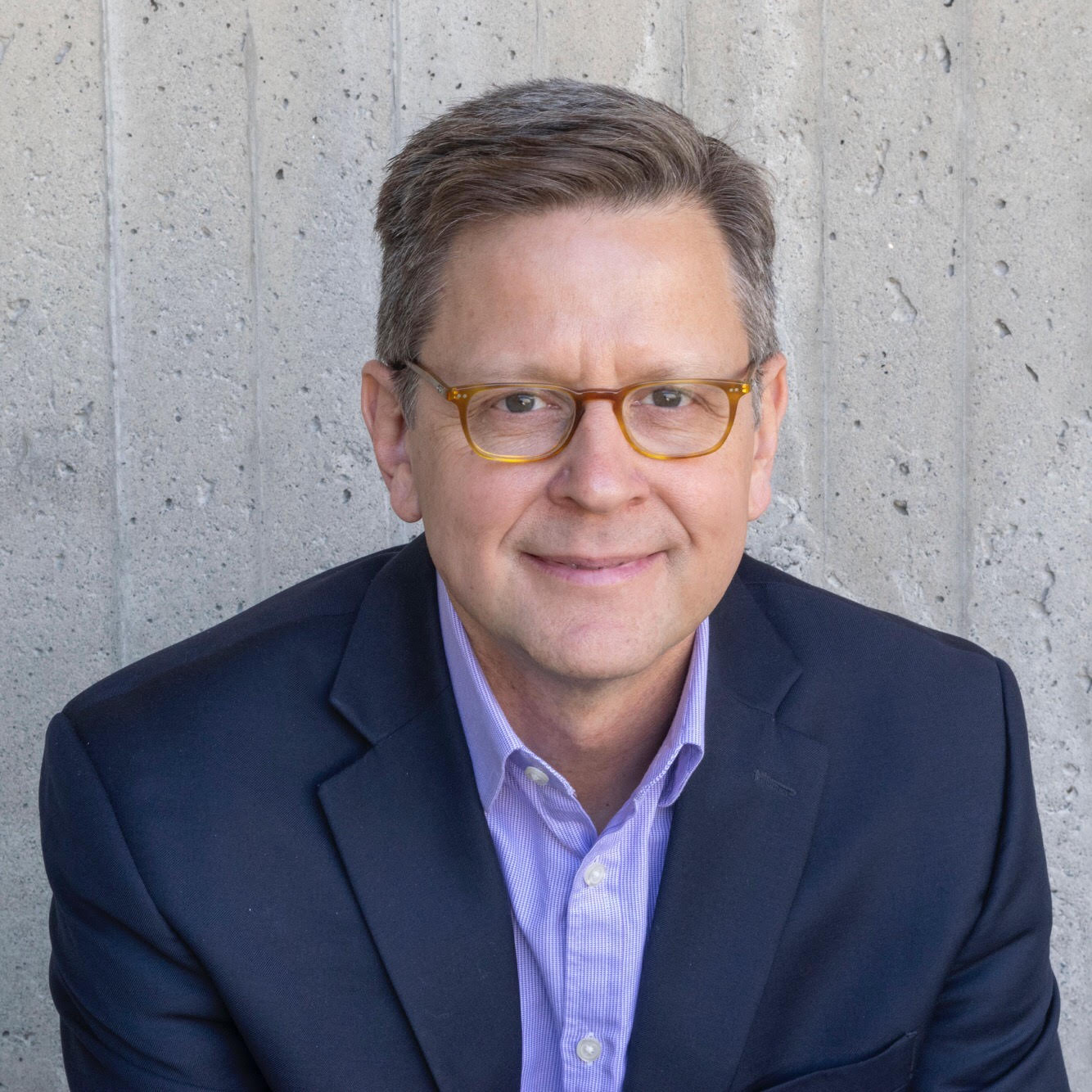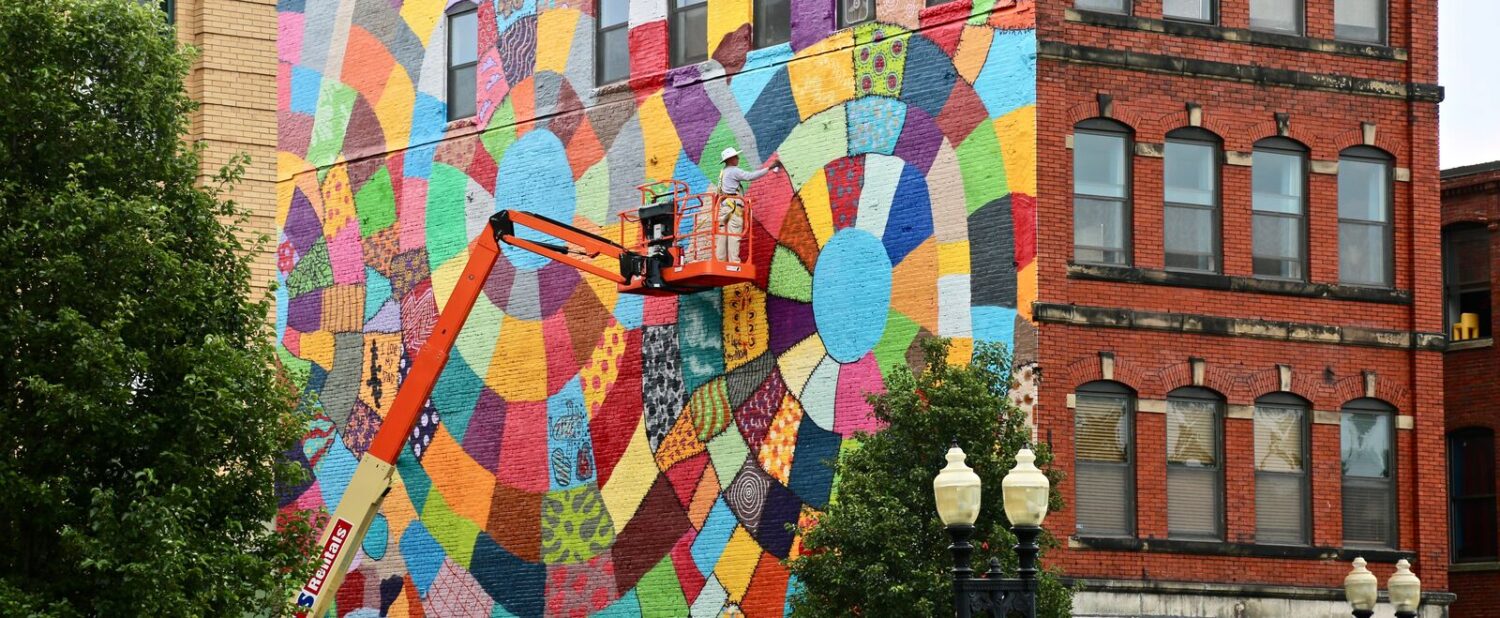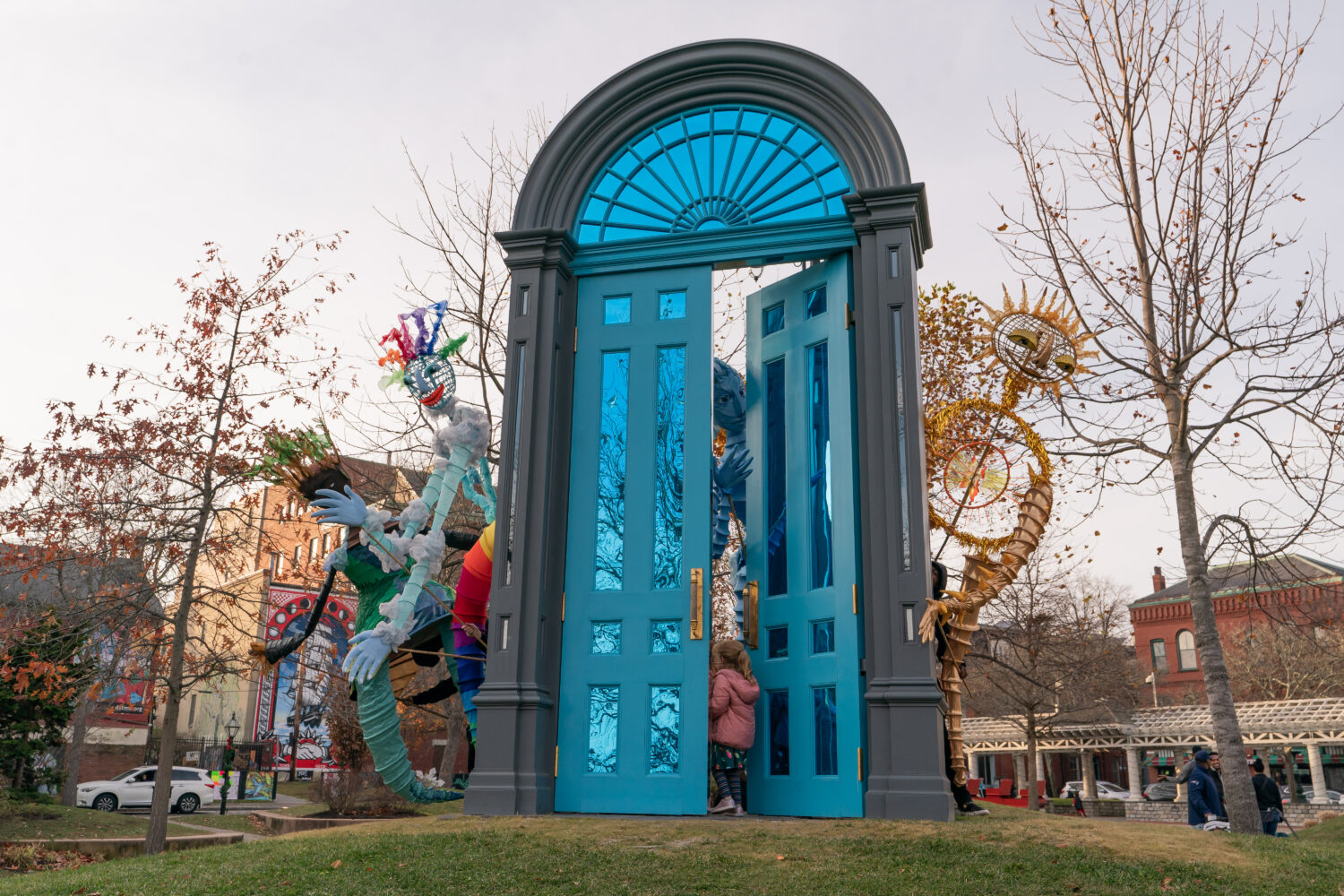Local arts provide a wellspring for community – energizing residents and enriching civic life. Our regions benefit from the remarkable ways that arts and cultural expression help people engage, connect, and contribute to more equitable, vibrant places. It happens on multiple levels.
Merrimack Valley residents join in municipal development through a question that goes to the heart of community life: “What is it about this place that feels like home?” People respond by naming the sites, from museums to parks and neighborhood settings, and contacts that matter to them.
Public officials recognize that these spatial and human touchstones represent belonging. By creating municipal plans – including policies for zoning, transportation, green spaces, and taxation – that reflect cultural practices in each locale they accelerate community and economic development.
“Pride of place is a really important piece,” said Greg Federspiel, Manchester town administrator. “We are a hollow shell if we don’t have that life and soul that the arts bring.”
Elevated Thought, a youth-focused arts and social justice nonprofit in Lawrence, compiled artist expressions of belonging in Merrimack Valley to complement the region’s cultural planning. Their publication, Connecting Community, carries emotive poetry, drawings, and photos.“Art can allow individuals the space to grapple with and define meaning both in an individual and collective way,” wrote Marquis Victor, executive director at Elevated Thought. “Through this project, members of our team were able to consider and reflect on the meaning of others; people geographically close but whose everyday reality is so drastically different.”

“Lawrence Street in Lawrence is where I grew up.” Artist Michelle Collado contributed this image and statement to the Merrimack Valley Place & Meaning 2020 Expression Book “Connecting Community”, part of the cultural planning process supported by Essex County Community Foundation.

“I love how art has beautified the city of Lawrence and that I’ve been part of that process. I think it is wonderful for creatives in our community to express themselves.” Artist Mariana Perez contributed these images and statement to the Merrimack Valley Place & Meaning 2020 Expression Book “Connecting Community”, part of the cultural planning process supported by Essex County Community Foundation
The Essex County Community Foundation invested more than $250,000 to demonstrate the impact of cultural planning in the fifteen cities and towns served by the Merrimack Valley Planning Commission. Positive outcomes are spawning broader adoption. Many local leaders envision cultural planning, including ensuring a seat at the municipal development table for artists and arts organizations, becoming a hallmark in the futures of all 34 Essex County communities.
Berkshire Taconic Community Foundation sponsored resident researchers to learn more about how people relate to arts in a region rich in cultural resources. These resources help define the Berkshires as a vibrant place for many but not all because of real and perceived barriers to engagement. The research team contacted 450 people living year-round in Pittsfield – including people of color, immigrants, youth, and people with low incomes – who reported that barriers such as cost, transportation, and social discomfort keep them away from arts venues.
These findings fed the design of Arts Build Community, an initiative now in its sixth year. To date, 60+ partners and nearly one million dollars in funds are creating pathways for all residents to be involved with arts as a powerful means to increase community engagement.
One inventive approach, by the Center for Peace through Culture in Housatonic, equips ambassadors to connect underrepresented families with cultural experiences around the county. Volunteer Julie Haagenson was tasked with bringing a couple from her neighborhood to a performance at Tanglewood in Lenox. These older adults had a long-standing love of classical music though, despite living in Berkshire County for five years, they were intimidated to visit this fabled summer home of the Boston Symphony Orchestra.

Julie Haagenson, right, with fellow ambassador Laura Cabrera, left, and Center for Peace Through Culture’s Trudy Manion. The Center helped residents connect with Berkshire County arts through the Arts Build Community initiative of Berkshire Taconic Community Foundation.
Julie toured Tanglewood with its director of patron experience to prepare. She organized tickets, transportation, and a pre-concert meal at which the three neighbors talked about involvement with arts. “At the heart of what we’re doing is relationship building,” Julie reflected. “As an ambassador, I’ve experienced a whole series of connections that I didn’t expect. When we started thinking about it, we realized it’s about a sense of belonging.”
Creating welcoming spaces throughout the Berkshires’ many art forms and venues is core to Arts Build Community. Nearly 10,000 year-round residents in historically underrepresented groups are involved in arts through the initiative. Several projects help internationally acclaimed cultural institutions move into closer communion with the diverse population of the region.
For example, local advisors and resident inputs are now essential to designing program and outreach strategies at MASS MoCA in North Adams. In Great Barrington, the Mahaiwe Performing Arts Center convened a Spanish-language advisory committee to shape film screenings that drew nearly 200 attendees from a variety of Latin cultures. “It really felt like home for some people,” said Melissa Canavan, who coordinated the advisory committee. “It was great to see such a wonderful environment and exchange of dialogue.”
These stories from our distinct parts of the state speak to the ways that local arts nurture bonds and bridge divides. Research affirms these anecdotes. A wide-ranging study, The Arts and Civic Engagement (Nick Rabkin, 2017) reported that people who engage with arts, especially those involved in creating art, are more likely to be active in their communities and to be making a difference in the lives of others.
Closer to home, research on Culture + Community in a Time of Transformation (Slover Linett, 2021) shows that arts and creativity are deeply integrated in the lives of state residents. During the pandemic, 93% have done personal creative activities. In the years before Covid, 96% joined arts and culture activities in-person – with more than half directly participating in group art making like a community mural, play, or protest.
The advantages of local arts go well beyond the value they deliver to creative economies. There is an ample additional case for investing in arts as an engine for civic life. We encourage leaders from all sectors – including newly seated elected officials at the state and local levels – to embrace and expand the stunning public benefits that emanate from a resourced, resilient arts sector.
Arts are a community enabler that radiates belonging, connection, and caring. Civic life rises as people engage in arts. Ensuring that all residents have access to, and a voice in shaping, cultural assets in the places they love is a worthy goal. And it’s within our reach.
This blog post was originally published as an op-ed on April 4, 2023 by CommonWealth Magazine under the title: “How arts enrich the state’s civic life”. It’s the third in a series of commentaries on arts in community authored by community foundation leaders who are partners in Barr’s Creative Commonwealth initiative.
Pictured at top of the page: Melissa Canavan, left, and Executive Director Janis Martinson of the Mahaiwe Performing Arts Center in Great Barrington, convened Spanish-language advisors to develop film screenings drawing attendees from Latin cultures through the Arts Build Community initiative of Berkshire Taconic Community Foundation.
